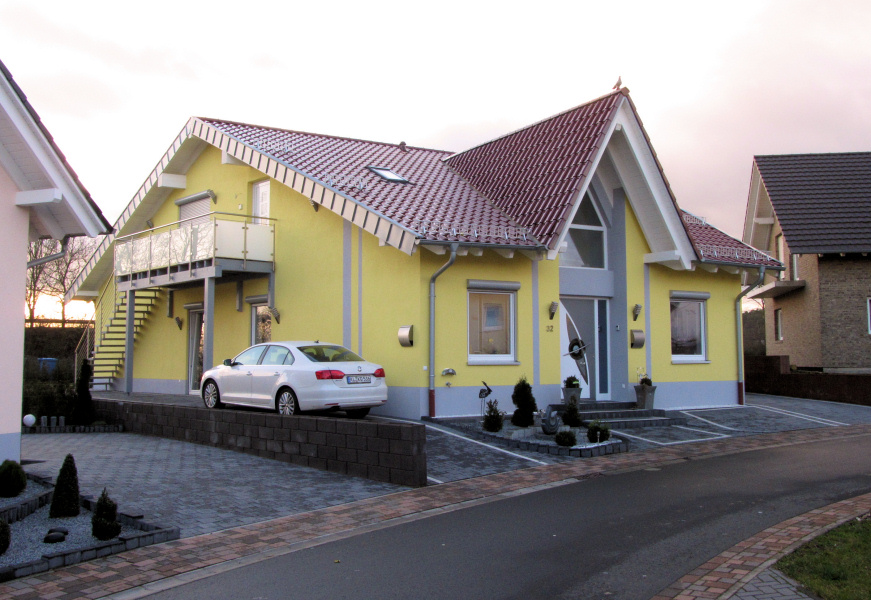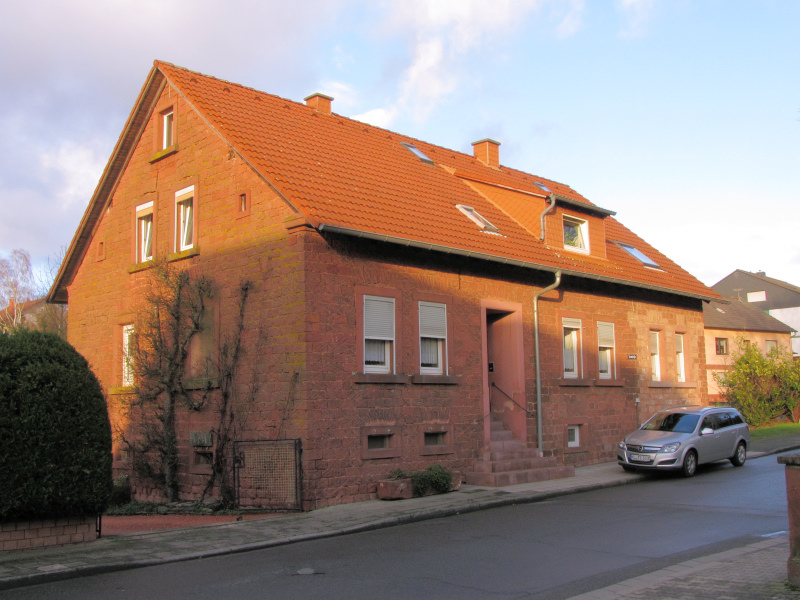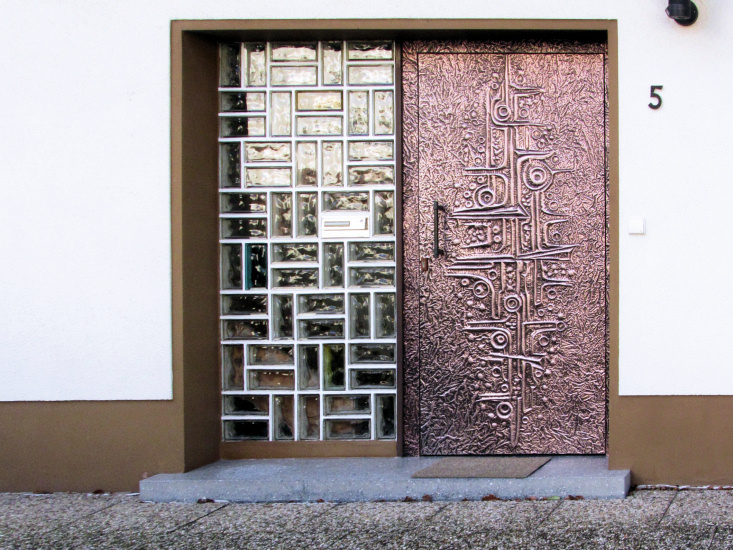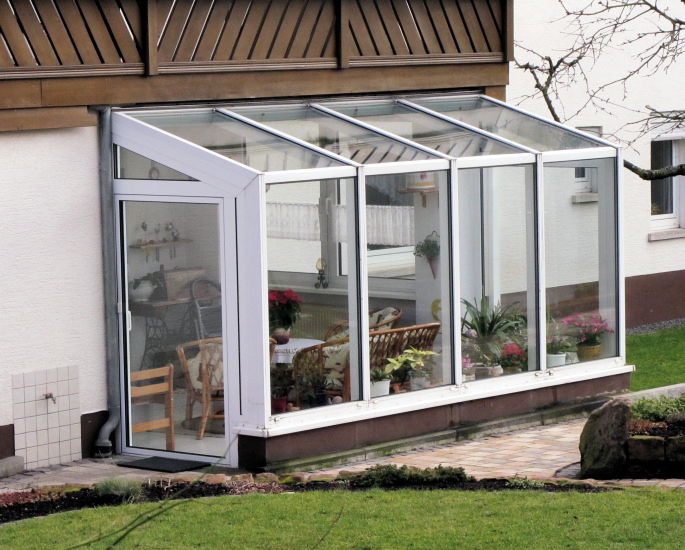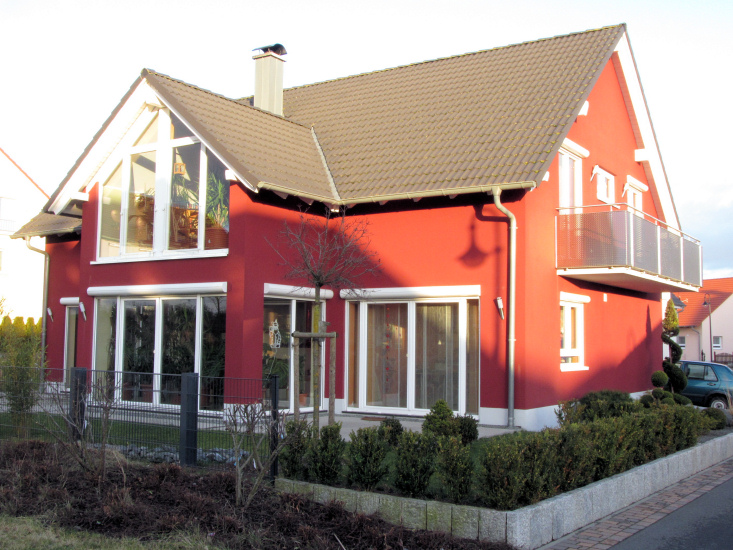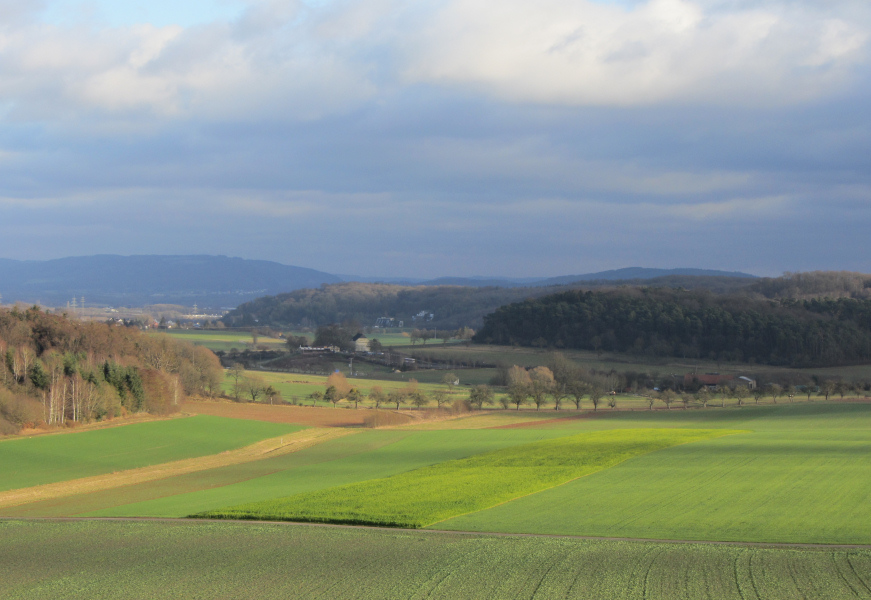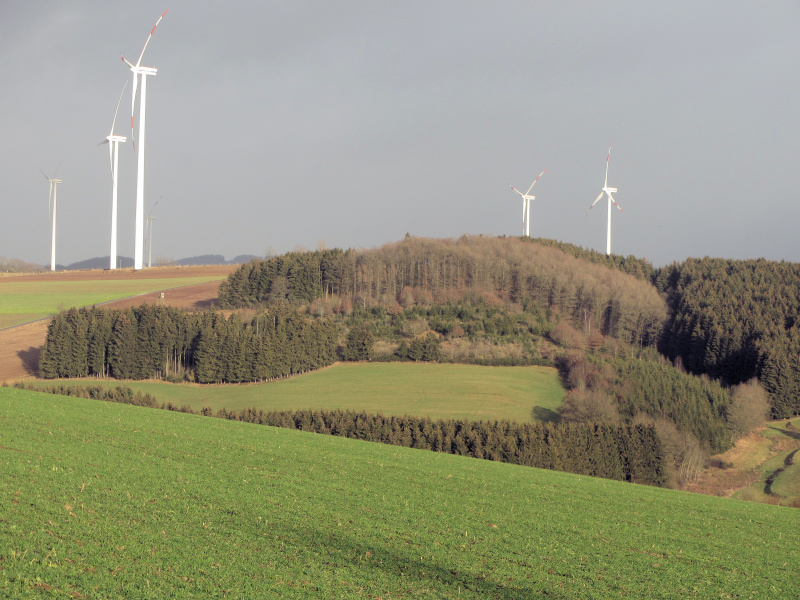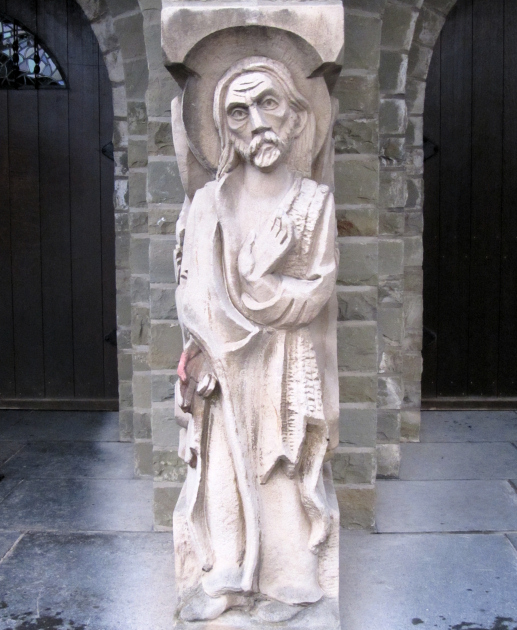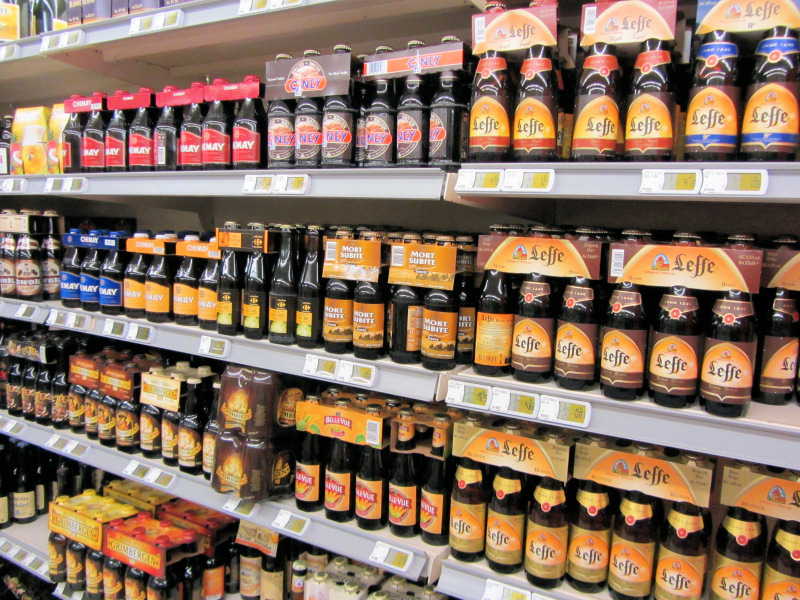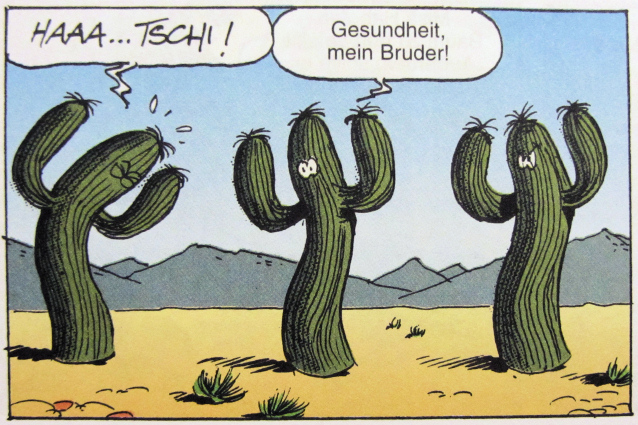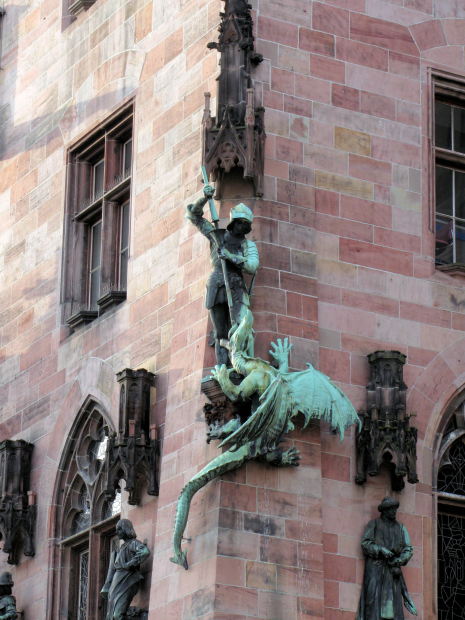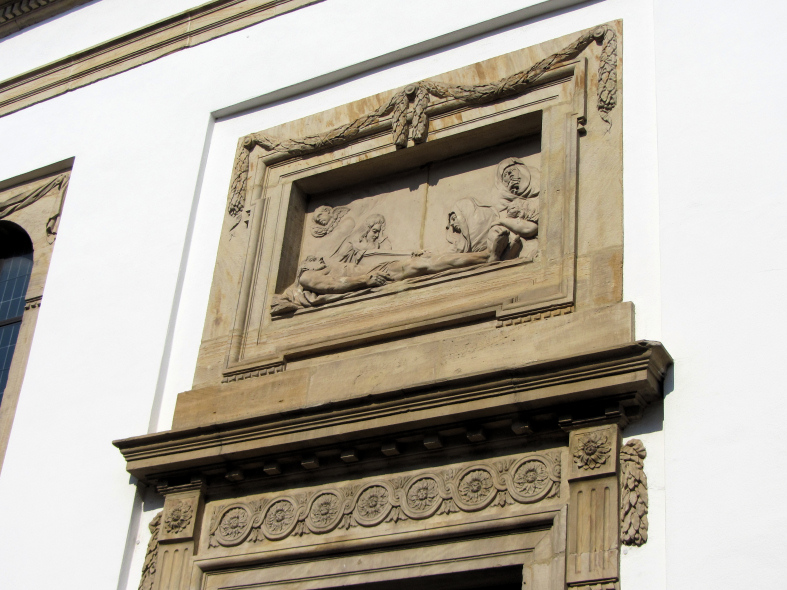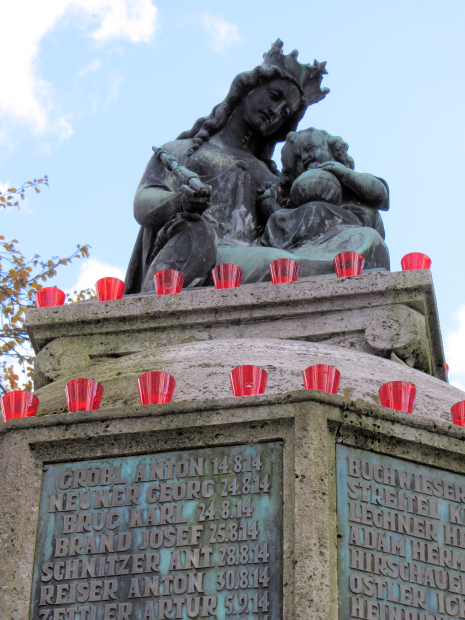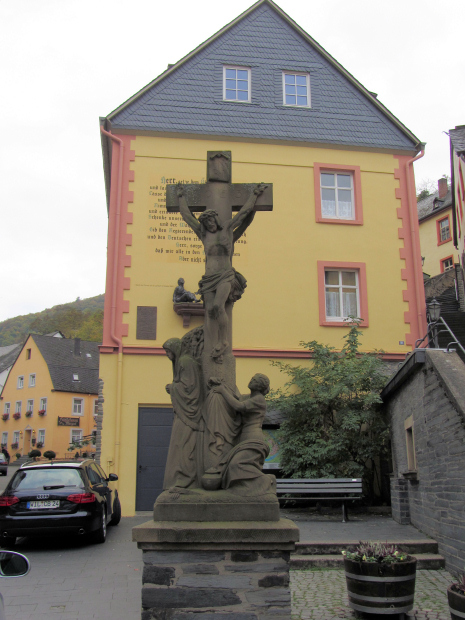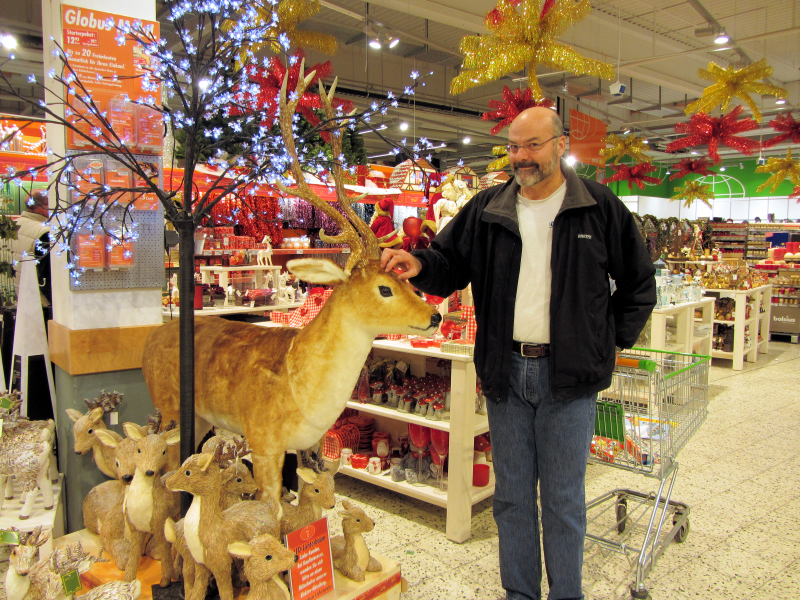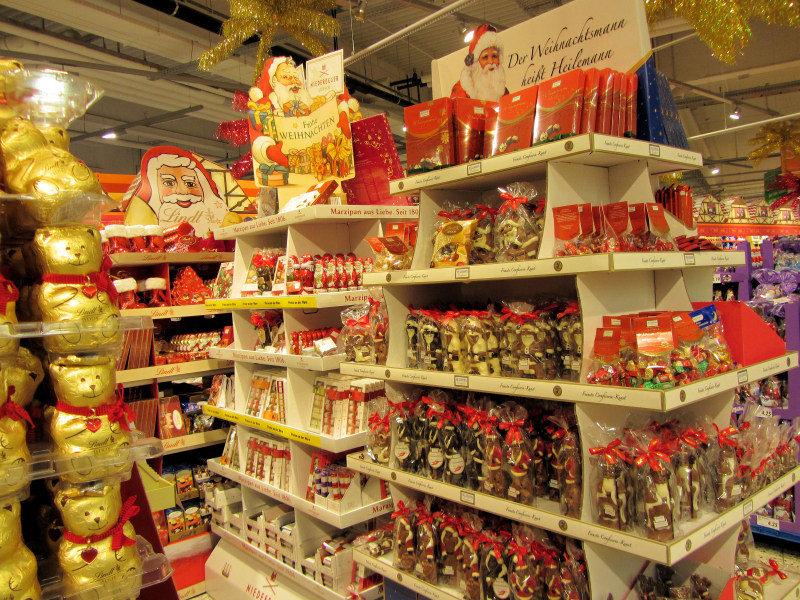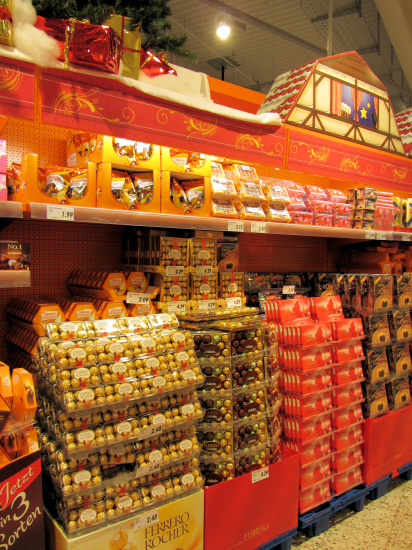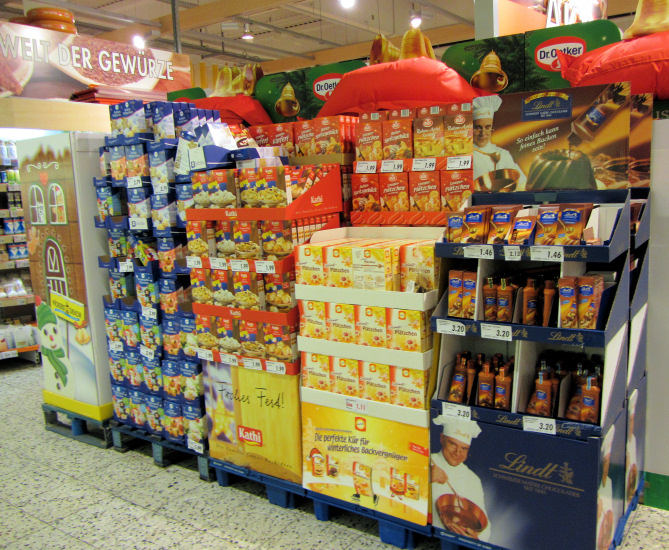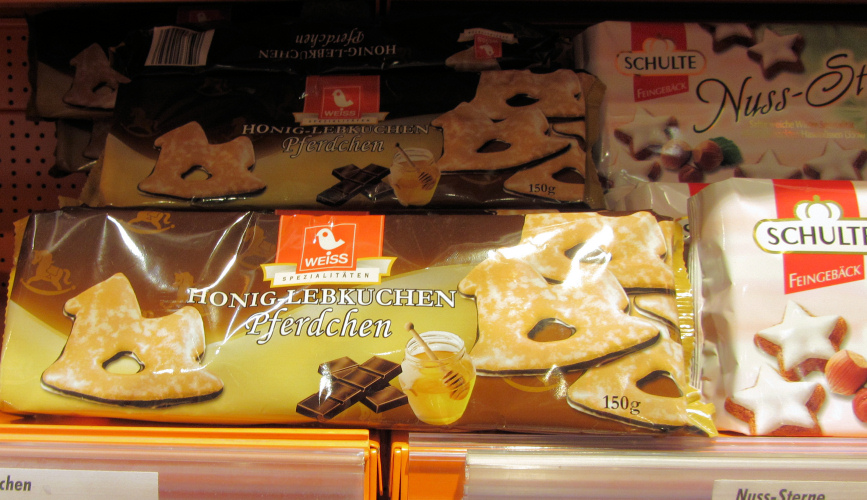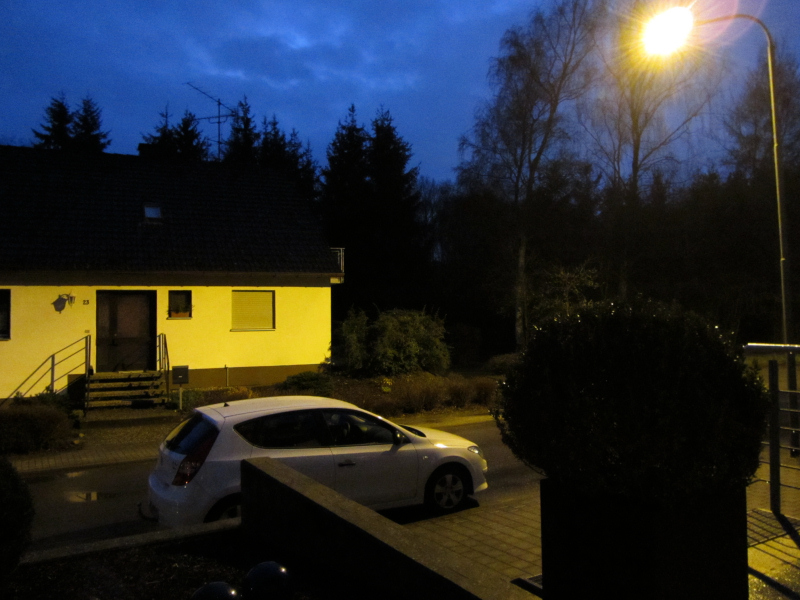
What a peaceful nighttime scene! Just a quiet street in Rodenbach, Germany. But that was before the madness.
I’m from the western United States, a land of droughts, dead vegetation, and fast-moving wildfires. More than 21,000 wildfires burned across my state last year, causing homeowners over a hundred million dollars’ worth of damage. (Smith) Fireworks are forbidden where I live. Usually, the city puts on a nice fireworks display for the Fourth of July, but last year, even that had to go. (Gonzalez)
Germans don’t share this particular worry. Their houses are usually stone, brick, or concrete block, their roofs are tile, and this year in particular, their land is thoroughly soggy, with almost eight inches (200 mm) of rain falling in December alone. Fireworks turn up in lots of stores here before New Year’s Day, and I’m not just talking about sparklers and caps, I’m talking about entire display sets with timers and electronic fuses.
The result is astounding!
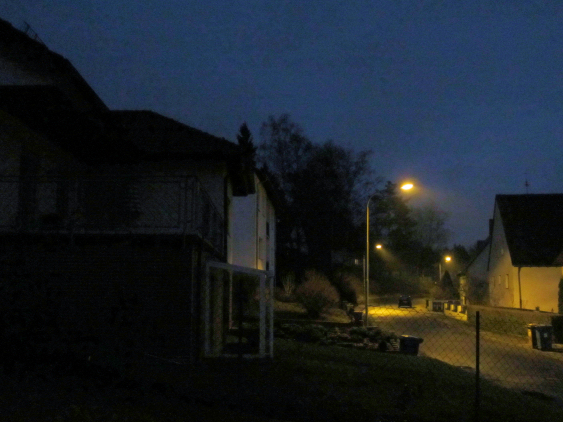
Click on the image above to link to a short Youtube video Joe took of the fireworks on our street. Every single street around here turns into a stunning fireworks battleground after midnight. Rockets explode in glittering chrysanthemum starbursts. The noise is enough to create a kind of auditory claustrophobia. Smoke forms a low-lying cloud and hangs in the air. And the fun lasts for a good forty-five minutes.
I love New Year’s in Germany!
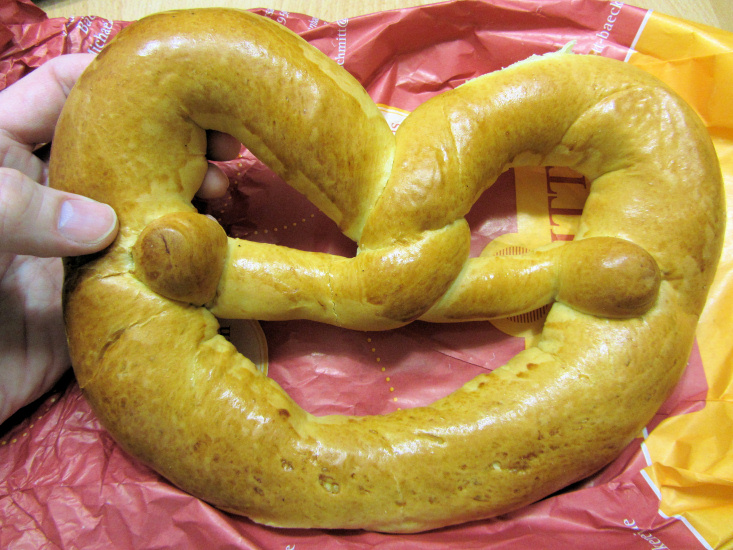
Next morning, Rainer paid us a visit to bring us a New Year’s Day pretzel. This monster pretzel, which Joe is grasping in the photo above, is made of sweet bread and brings good luck. That tickled my fancy. I knew my Scottish ancestors would have been even happier to see Rainer than to see his pretzel. According to the “first-foot” tradition in Scotland, good or bad luck comes from the first person across the threshold in the new year, and a dark-haired male brings the best kind of “first-foot” luck.
By sheer happenstance, Joe and I also wound up eating black-eyed peas on New Year’s Day, so our good fortune this year should be unassailable.
Smith, Aaron. “Wildfires and drought cost Texas billions.” CNN Money, September 8, 2011. Retrieved from http://money.cnn.com/2011/09/08/news/economy/damages_texas_wildfires/index.htm
Gonzalez, John W. “Fireworks shows snuffed for July 4.” My SA, June 24, 2011. Retrieved from http://www.mysanantonio.com/news/local_news/article/Woodlawn-Lake-Lackland-Randolph-fireworks-show-1437243.php
To read my latest blog posts, please click on the “Green and Pleasant Land” logo at the top of this page. Photos taken in January, 2012, in Rodenbach, Germany. Text, photos, and video copyright Clare B. Dunkle and Joseph R. Dunkle.

